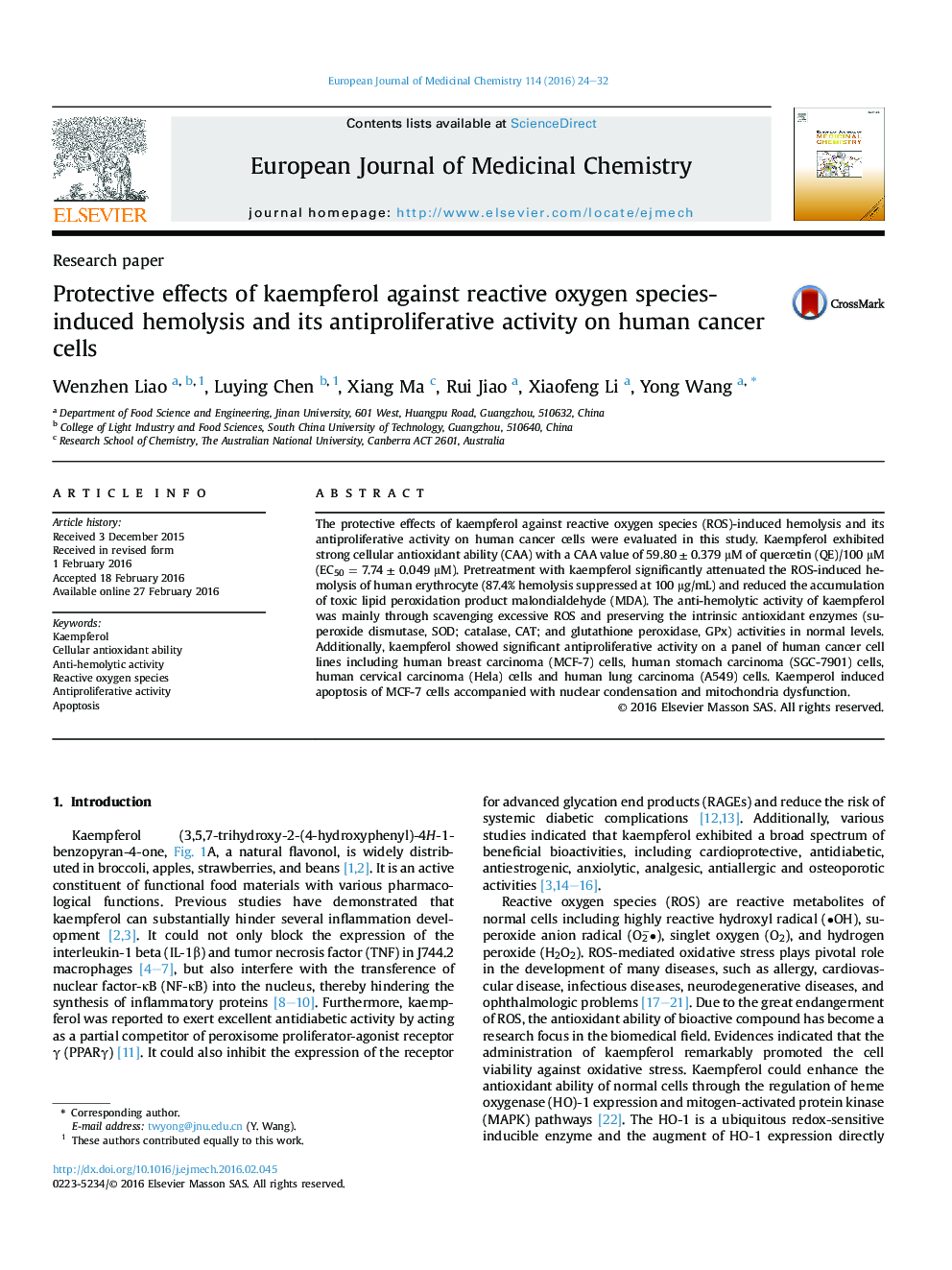| Article ID | Journal | Published Year | Pages | File Type |
|---|---|---|---|---|
| 1398631 | European Journal of Medicinal Chemistry | 2016 | 9 Pages |
•Kaempferol exhibited strong cellular antioxidant ability by scavenging the accumulation of ROS.•Pretreatment with kaempferol significantly attenuated the ROS-induced hemolysis.•Kaempferol preserved the activities of antioxidant enzymes to normal levels.•Kaempferol showed significant antiproliferative activity against several human cancer cells.•Kaempferol induced apoptosis of MCF-7 cells through the mitochondrial pathway.
The protective effects of kaempferol against reactive oxygen species (ROS)-induced hemolysis and its antiproliferative activity on human cancer cells were evaluated in this study. Kaempferol exhibited strong cellular antioxidant ability (CAA) with a CAA value of 59.80 ± 0.379 μM of quercetin (QE)/100 μM (EC50 = 7.74 ± 0.049 μM). Pretreatment with kaempferol significantly attenuated the ROS-induced hemolysis of human erythrocyte (87.4% hemolysis suppressed at 100 μg/mL) and reduced the accumulation of toxic lipid peroxidation product malondialdehyde (MDA). The anti-hemolytic activity of kaempferol was mainly through scavenging excessive ROS and preserving the intrinsic antioxidant enzymes (superoxide dismutase, SOD; catalase, CAT; and glutathione peroxidase, GPx) activities in normal levels. Additionally, kaempferol showed significant antiproliferative activity on a panel of human cancer cell lines including human breast carcinoma (MCF-7) cells, human stomach carcinoma (SGC-7901) cells, human cervical carcinoma (Hela) cells and human lung carcinoma (A549) cells. Kaemperol induced apoptosis of MCF-7 cells accompanied with nuclear condensation and mitochondria dysfunction.
Graphical abstractFigure optionsDownload full-size imageDownload as PowerPoint slide
